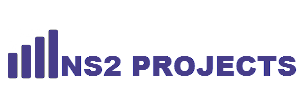- (0)
- 19
Nov -
Author : NS2 Projects Category : NS2 PROJECT TITLES 2015
Tags : IEEE Ns2 Projects, Ns2 Projects, Ns2 simulator Projects
5G mobile networks will very likely include features that allow for a dynamic spectrum access (DSA) in order to exploit spectrum holes of a primary system. The efficient utilization of spectrum holes with minimum impairment of the primary system requires a waveform with a very low adjacent channel leakage ratio as well as robustness to time and frequency offsets. One of the approaches for new waveforms is Generalized Frequency Division Multiplexing (GFDM), a digital multi-carrier transceiver concept that employs pulse shaping filters to provide control over the transmitted signal’s spectral properties. In this paper we present experimental results that evaluate the impact of the new GFDM waveform on an existing 4G system.
The 4G system was based on Eurecom’s OpenAirInterface for the en and a commercial UE. The 5G system was emulated using the LabVIEW/PXI platform with corresponding RF adapter modules from National Instruments and TUD’s GFDM implementation. The experimental results show that GFDM can be used with about 5 dB higher transmit power than a corresponding orthogonal frequency division multiplexing (OFDM) system, before any impact on the primary system is noticeable. The results from our real-time measurements were validated by simulations.
